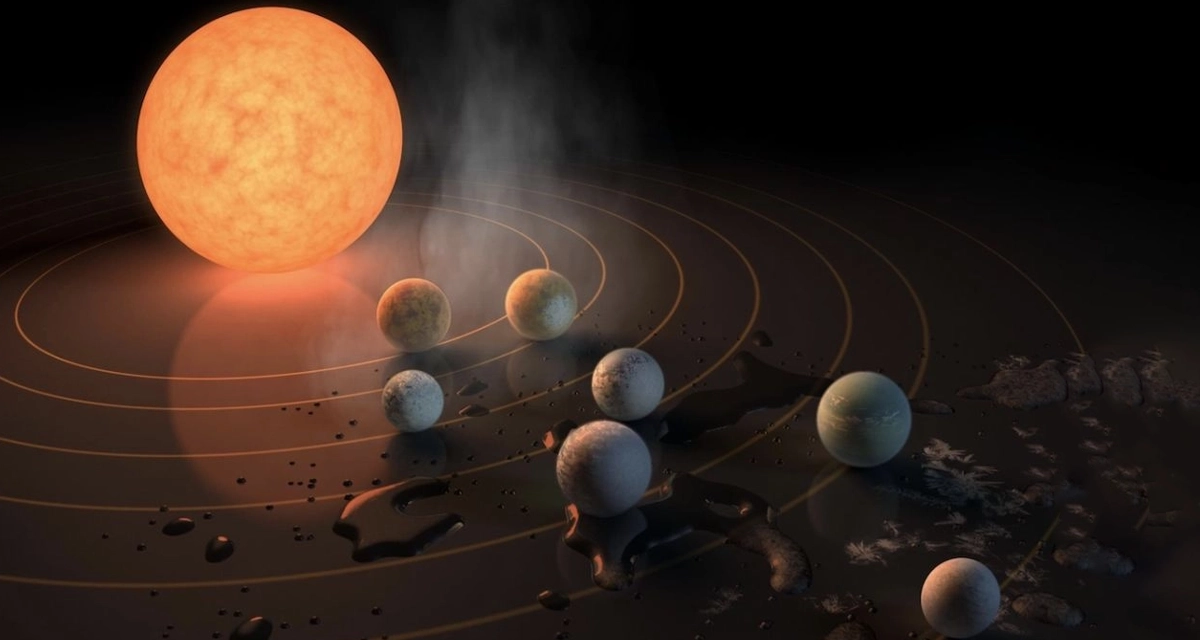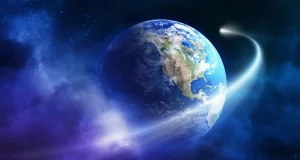The most similar world to Earth
Currently, the most similar planet we know to the Earth is the Earth itself. Of course, there is also a scenario that there are many planets in the parallel world that are very similar to Earth, but this is only one scenario.
To find an Earth-like place, researchers look for features such as being rocky and having a mass similar to Earth’s. Research shows that there are planets that can be Earth’s sister or brother planets due to their similarities to Earth. In fact, research shows that for every five Sun-like stars in the Milky Way, there is one Earth-like planet. The earth is our home and that is what makes it special. But it is also possible that there are many planets similar to Earth in the world, or that they are emerging, or even that many planets similar to Earth have been born.
In the meantime, to identify places similar to Earth, one of the main things that we should pay attention to is the mass of that planet. Scientists’ research shows that bodies and planets whose mass is approximately 1.5 times that of Earth are made of gas, and this makes them less similar to Earth.
An astrophysicist from the University of Michigan said: We usually classify planets based on their size. Therefore, if there is something the size of Mercury, we call it Earth.
But in principle mass is more important for identifying worlds that are similar to our Earth. There are other factors, such as the region in question being neither too cold nor too hot, or having liquid water on that planet, as a place where we can consider it similar to Earth and can be a habitable region like Earth. It is impressive.
Some scientists believe that a planet cannot be like the Earth unless it revolves around the Sun like the Earth and has gravity like the Earth. However, opening the meaning of a planet being like the Earth raises many scientific and philosophical questions. Although the definition of Earth-likeness is complicated, it seems that there are currently some worlds that fit our description, or at least some of them.
The most favorite Earth-like worlds
The first exoplanets were discovered in 1990. At first, when we look at this from a broader perspective, everything is very new. It is very remarkable that scientists have been able to discover such planets in a short period of time. At that time, scientists were able to discover about 4000 confirmed extrasolar planets and thousands of similar planets using ground and space telescopes. Among the thousands of planets discovered, only a few were Earth-like.
In 2014, scientists using NASA’s Kepler Space Telescope discovered the first Earth-like world in the habitable zone of another star. This star, which is called Kepler 186F, is located 500 light-years away from Earth.
According to the research of some NASA scientists, the eccentricity of this planet is almost zero, so this planet does not experience many temperature fluctuations and therefore it is most likely habitable.
Also, NASA considers the Kepler 425 b exoplanet and its star to be the closest analog to our Earth and also to the Sun. Although the planet is about 60% larger in diameter than Earth, it appears to be rocky and in the habitable zone of a J-type star similar to our own.
While the Trappist-1 planets have some very interesting features, they are not Earth’s lost twin planets. Some computer modeling studies show that even Trappist-1 planets like Venus could be too hot to host water. Among them, only the Trappist-1e planet can be the most Earth-like planet with life among the Trappist-1 planets, but it is still impossible to confirm this without more information.
Searching for a planet like Earth in the future
In order for exoplanet researchers to make a better prediction of habitable and Earth-like planets, they must first understand and identify the atmosphere around these planets. To realize this issue, they must first have access to some advanced and powerful tools and equipment, some of which are currently under construction.
One NASA scientist said: In the next 10 years, we will have very good and advanced telescopes, so that the width of these telescopes will be 30 meters and their height will be 40 meters. This is while the largest telescope we currently have is about 10 meters in diameter. NASA’s Roman Space Telescope, which is scheduled to be launched in the mid-2020s, is one of these telescopes. The task of this telescope will be to identify 2,500 exoplanets during a 5-year journey.
Even before this, the James Webb Space Telescope has been one of the most powerful exoplanet hunters ever built. An important part of its mission is to study the atmosphere around Earth-like planets. In addition, it looks for biological signs and gases related to past or present life.
As a result, in order to find worlds that are very similar to our world, we must look for signs that are common with our world. Achieving these signs using the advanced facilities that researchers will have at their disposal will strengthen the possibility that life may be developing elsewhere. It is an honor to receive such information.
Source : Planetary Society





